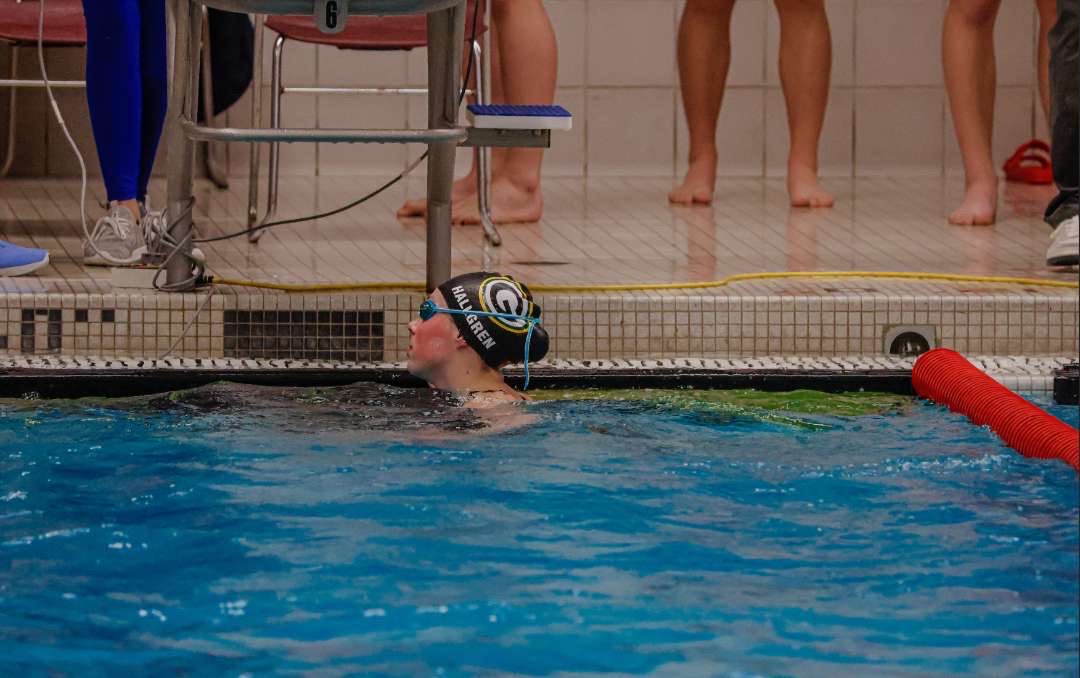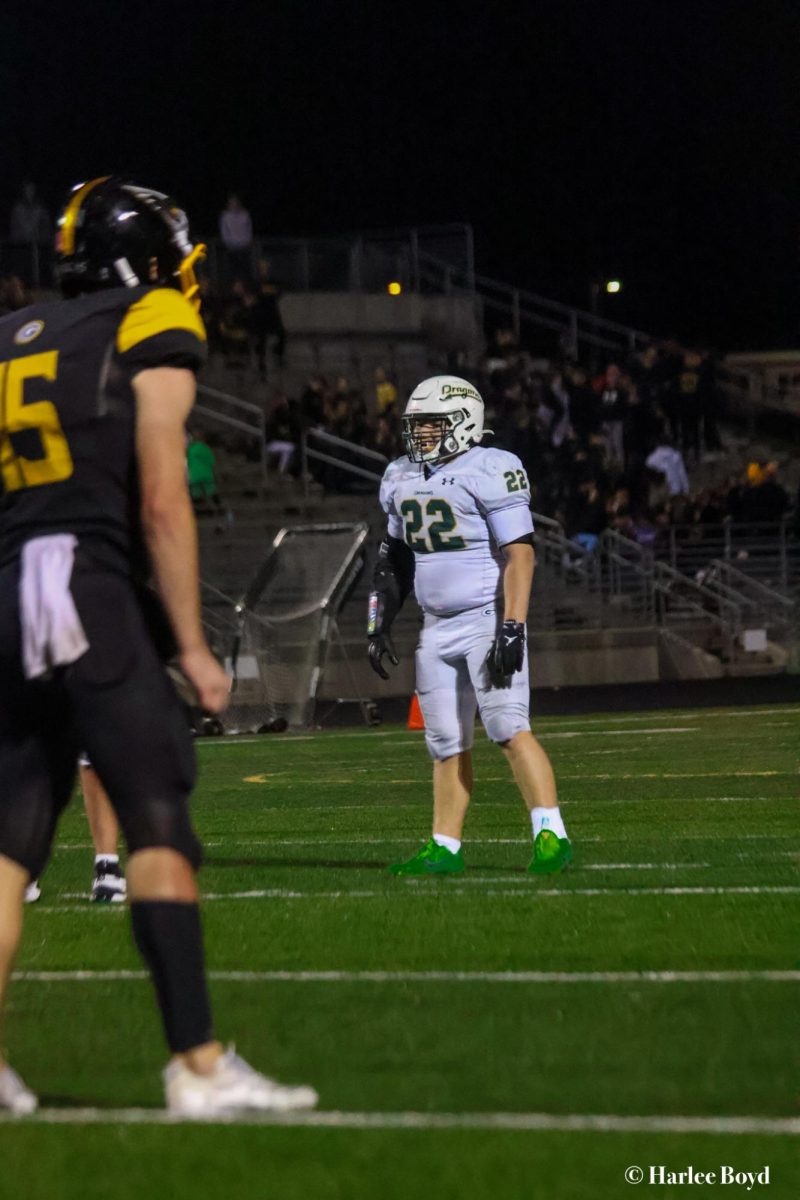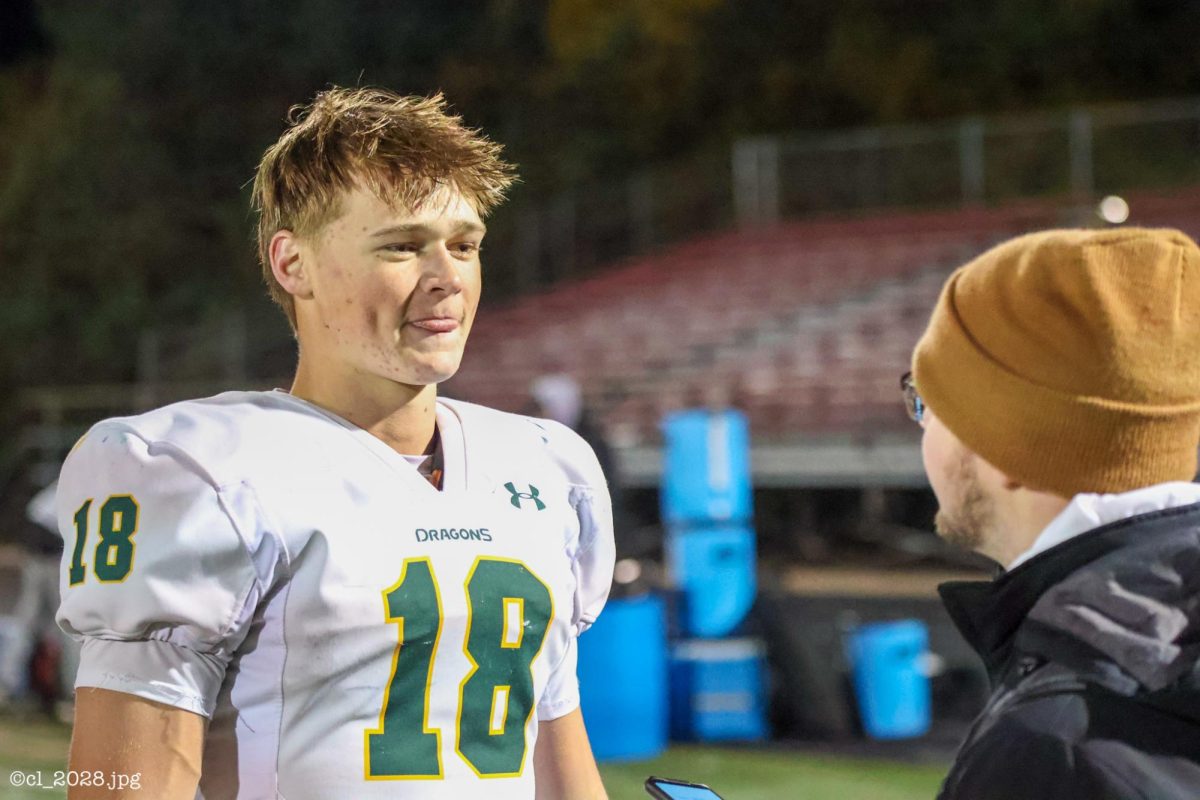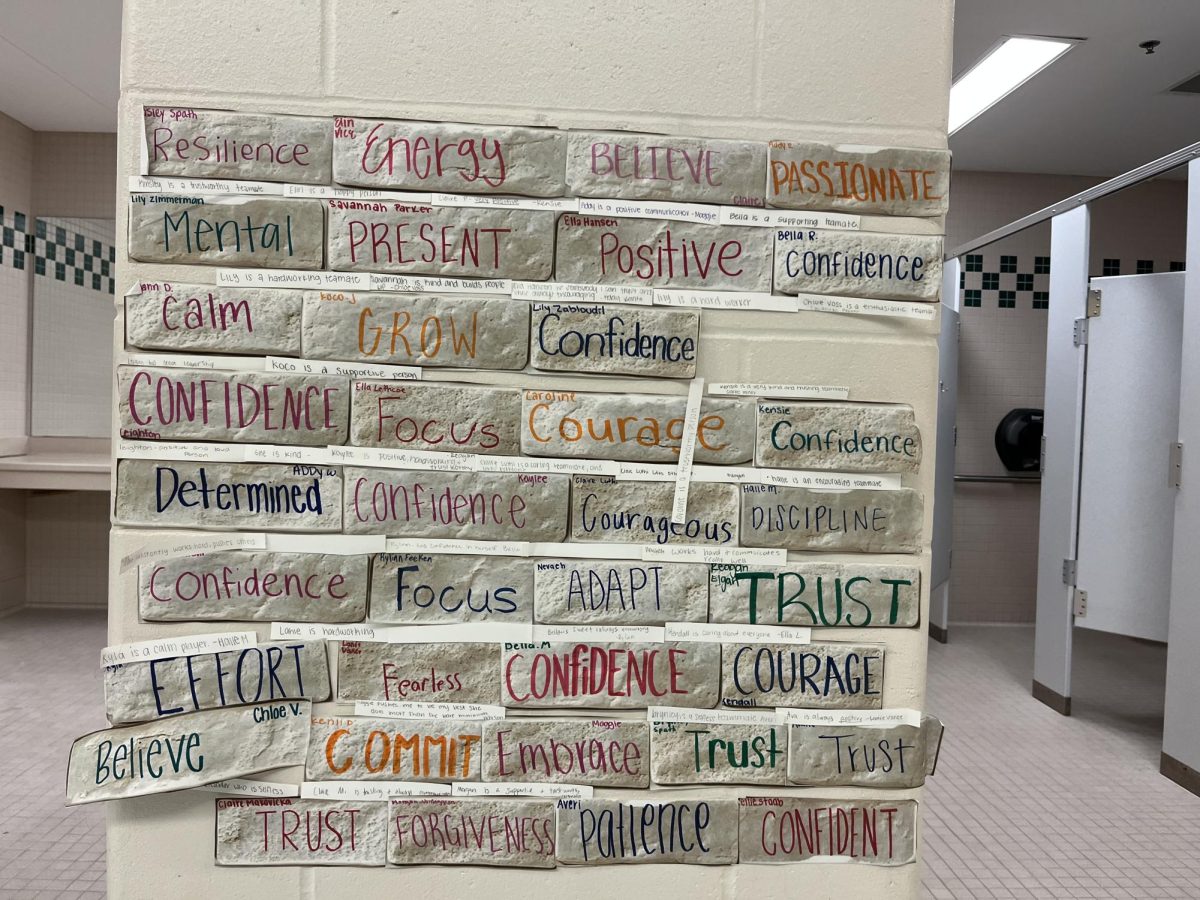Injuries are incredibly mentally and physically taxing to endure, especially for a student-athlete. There’s so much to think about and consider when dealing with injuries.
Sophomore Mya Hallgren is on the GHS Swim Team and tore her ACL and meniscus at a volleyball tournament in April, and she has had to push through recovery.
Sports are discovered in many ways, whether that be family, friends or people you see online. Many try multiple times to find what they are passionate about and want to pursue.
“I’ve been swimming ever since I was in first grade, and my cousins are really good swimmers, and so me and my brother kind of got into it because of them, and so we’ve been swimming ever since,” Hallgren said.
Hallgren had gotten injured going up to hit a ball in a volleyball tournament in April. In a matter of seconds, her daily life had changed.
“I thought she hurt her ankle, so I went over and sat on the floor with her, and she had her head in my lap, and she was crying, and she told me that she thought she tore her ACL, but I thought there was absolutely no way she did,” Mya’s mom, Abbie Hallgren, said.
For many athletes working towards goals, whether that be qualifying for state or a certain competition, it’s a huge deal to improve. It gives athletes something to look forward to and be excited for.
“It made me sad because she did it right before State swimming,” Abbie said. “And she had worked really hard to make it to State, and so she found out she qualified for State the same week that she tore her ACL, so that was really hard to see her cry and be sad. It just, you know, it just affects a mom the same way. Yeah, it just made me sick.”
When dealing with injuries, there’s always a process to figuring out exactly what’s wrong and the specific steps it may take to repair. This can mean something completely different depending on the individual.
“They did a full repairment on my meniscus, a full repair on my ACL,” Mya said. “They took part of my patellar tendon as my new ACL.”
Surgery can be an extremely scary process that can be very difficult to grasp, especially the healing process that follows.
“It was extremely terrifying,” Mya said. “I’m just, like, I’m also just not good with medical stuff, but like the thought of being put to sleep, the thought of not being able to walk, having crutches, having to relearn basic human activities such as walking was just a very scary thought to me, the most pain I have ever felt in my entire life.”
Being cared for and supported by friends and family immediately following makes the biggest difference in lonely times.
“I had a lot of friends that were by my side, my family, my coaches just people that believed in me and always, you know, like redirected me when I was having negative thoughts and just encouraged me through all the pain and tough obstacles I had to overcome,” Mya said.
Having people who support you always makes a huge difference, especially when dealing with mobility issues. After surgery, you must rely on others heavily, which can be hard to adjust to.
“After she had surgery, me and my husband kind of split time off from work to take care of her cause she couldn’t she was on a lot of meds and stuff and so we had to take care of her and she couldn’t walk so we had to make sure that she could get to the bathroom and all those kinds of things and I had to help her with a lot with just day to day things,” Abbie said. “I think the biggest thing that we had to get across to Mya was it feels like it’s the end of the world, but it’s not.”
Motivation can be hard to find in hard times, and working hard may seem out of reach; therefore, it is so important to know what you’re working for.
“The motivation of the state, since it technically got stripped from me last year, I still swam with a torn ACL,” Mya said. “I didn’t do as well as I normally probably would, so the motivation of making it back to state and continuing to get better in swimming has been a motivation to continue to work and heal my leg.”
It’s super important when dealing with injuries to stay positive and look on the bright side, even when it’s hard to see the good. Mya pushed through every day with resilience.
“Keep your goals in mind and don’t let the hard days consume you,” Mya said. “There are definitely hard days that it gets hard to even want to get out of bed, walk around. Just stay motivated.”
The healing process is long, but it’s important to keep pushing to get back to where you were.
“Countless hours of PT trying to get back in the water and relearn how to do basic activities of swimming and relearning how to walk is just something that’s just like you don’t think it’s going to be as hard as it is,” Mya said. “Seeing everybody else just continue to get better, while I pretty much restarted with something that I had to overcome mentally.”
Getting back into sports and athletics is very hard on the body and takes time and patience. Some days come with new accomplishments, while some make you feel like you’re going backward.
“The full recovery from my injury will take about nine to 12 months,” Mya said. “I’m currently a little over six right now, so I’ve got a few more months to go. I definitely started off slow. I started off by just pulling, not even using my legs, not pushing off the walls or anything, but now I’m fully cleared to do everything in the water.”
It’s not easy to recover and get better. One of the most rewarding parts of the recovery process is the moment you finally get back to doing what you love and seeing the work you put in to get where you are.
“I had my first swim meet back about two or three weeks ago,” Mya said. “I did a lot better than I thought I would. I honestly didn’t even think that I was going to get within five seconds of my best times, and I was two seconds off from my best times.”
Even after getting better, it can be easy to doubt yourself. There is always something to work towards, but it’s also okay to take time getting back into the swing of things.
“It’s just the mental block of having to overcome the challenge of knowing that I have an injured knee, and the thought of re-injuring is something that always pops into my head whenever I’m swimming, so I tend to hold back a little bit when I’m racing,” Mya said. “Definitely looking back like even just three months ago compared to what I can do now is crazy, just the tremendous difference PT can make and staying consistent with it.”
From an outside perspective, it’s so special to see loved ones get their spark back. The process takes on more than just the one who was injured, but also the people who love them.
“I’ve learned how strong my daughter is,” Abbie said. “It’s one of the probably hardest she’s ever been through, and the hardest things physically and mentally. Just because she couldn’t play volleyball this year, but all her friends are playing volleyball. And I think that’s been hard, but she has kept her chin up, she’s gone to PT, she does her PT at home every day. She’s gotten back in the water. I’m just really proud of her.”










